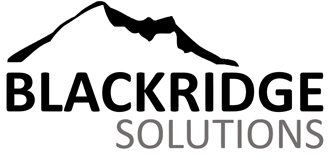Lone oil and gas sector workers often deal with hazardous gases and chemicals. These substances can pose serious health risks if not handled correctly. The remote locations typical in this industry add another layer of complexity. When a worker is alone, getting timely assistance becomes a significant concern.
Given these challenges, companies need to implement solid safety protocols and utilize advanced technology to safeguard their lone workers. From real-time gas detection systems to wearable safety devices, modern tools can provide the protection needed to keep these workers safe.
Emphasizing continuous monitoring, training, and regular maintenance ensures that these safety measures remain effective over time. By adopting these practices, oil and gas companies can create a safer work environment for their employees.
Understanding the Unique Risks for Lone Workers in Oil & Gas
Lone workers in the oil and gas industry face numerous unique risks. One significant risk is exposure to hazardous gases and chemicals. Workers often handle and transport substances like hydrogen sulfide and methane, which can be dangerous if not monitored properly. Even a small leak can lead to serious health issues, making it crucial to have effective gas detection measures in place.
Another major challenge is the remote locations where many oil and gas operations take place. These sites are often far from immediate help, making it harder to get quick assistance in an emergency.
When a lone worker faces an accident or health issue, the delay in getting help can have serious consequences. This isolation increases the necessity for reliable communication tools and real-time monitoring systems to ensure that workers can access help quickly when needed.
Physical dangers associated with equipment and machinery also pose significant risks. The industry relies on heavy machinery and complex equipment, which can cause severe injuries if not handled properly. Machines can malfunction, and equipment can fail, putting workers at risk of accidents. Ensuring proper training and regular maintenance of equipment is essential to minimize these dangers and protect workers from harm.
Implementing Comprehensive Safety Protocols
To safeguard lone workers, implementing comprehensive safety protocols is essential. Regular risk assessments and hazard identification should be conducted. These assessments help to pinpoint potential dangers and areas that need improvement. By identifying risks early, companies can take proactive measures to mitigate them and ensure a safer working environment.
Mandatory safety training and education programs are crucial. Workers need to be well-informed about the risks they face and how to handle them safely. Training sessions should cover the proper use of safety equipment, hazard recognition, and emergency procedures. Ongoing education ensures that workers stay updated on the latest safety practices and technologies.
Establishing a clear emergency response plan is vital for handling incidents effectively. Workers should know exactly what to do in case of an emergency, whether it’s a gas leak, equipment failure, or health issue. This plan should include detailed steps for immediate response, communication protocols, and evacuation procedures. Regular drills help ensure that workers are familiar with the plan and can act swiftly when needed.
By implementing these comprehensive safety protocols, oil and gas companies can significantly reduce the risks faced by their lone workers. Regular risk assessments, thorough training, and clear emergency response plans create a safer and more responsive work environment.
Advanced Technologies to Enhance Lone Worker Safety
Advanced technologies are critical in keeping lone workers safe in the oil and gas industry. Real-time gas detection systems are one of the most vital tools. These systems continuously monitor the air quality, detecting harmful gases like hydrogen sulfide and methane. Instant alerts are sent out when dangerous levels are detected, allowing workers to take immediate action to evacuate or call for help.
Wearable safety devices are another innovation that enhances safety. These devices can include smart helmets, vests, or bracelets that monitor workers' health and safety conditions in real-time. For example, they can track heart rates, detect falls, and even provide GPS locations. If an anomaly is detected, the system can notify supervisors or emergency services instantly, ensuring rapid response to any issues.
Reliable communication tools are essential for lone workers. These tools ensure that workers can stay in constant contact with their teams, regardless of their location. Modern communication devices, such as satellite phones and communication apps, provide clear audio and reliable connections. This constant connectivity is crucial for coordinating operations and responding quickly to emergencies.
Best Practices for Ensuring Ongoing Safety and Compliance
Routine maintenance and calibration of safety equipment are crucial best practices. Regular checks ensure that gas detectors and wearable devices function properly. Precise calibration guarantees that the equipment can accurately detect hazards and alert workers in time. Scheduling these maintenance tasks regularly helps in preventing equipment failures and ensures reliable performance.
Continuous monitoring and data analysis maximize safety efforts. By collecting and analyzing data from safety devices, companies can identify patterns and potential risks. This information helps in making informed decisions to improve safety protocols. Consistent monitoring ensures any issues are quickly identified and addressed before they escalate.
Regular audits and updates to safety protocols and technologies are necessary to keep up with industry standards and technological advancements. Conducting audits helps verify that all safety measures are effective and compliant with regulations. Updating protocols and equipment based on recent findings ensures workers have the best protection available.
Protect Your Lone Workers
Safety should always be the top priority for oil and gas companies, especially when it comes to lone workers. By understanding the unique risks they face, such as exposure to hazardous gases, remote locations, and equipment dangers, we can take specific actions to protect them. Implementing comprehensive safety protocols, like regular risk assessments and mandatory training, is essential to create a safe working environment.
Investing in the safety of lone workers not only protects them but also ensures the company's smooth operation. For more information on how to protect your team with the best lone worker safety devices, contact BLACKRIDGE Solutions today at (778) 686-5799 or [email protected]. Ensure your employees' safety is never compromised!



 RSS Feed
RSS Feed